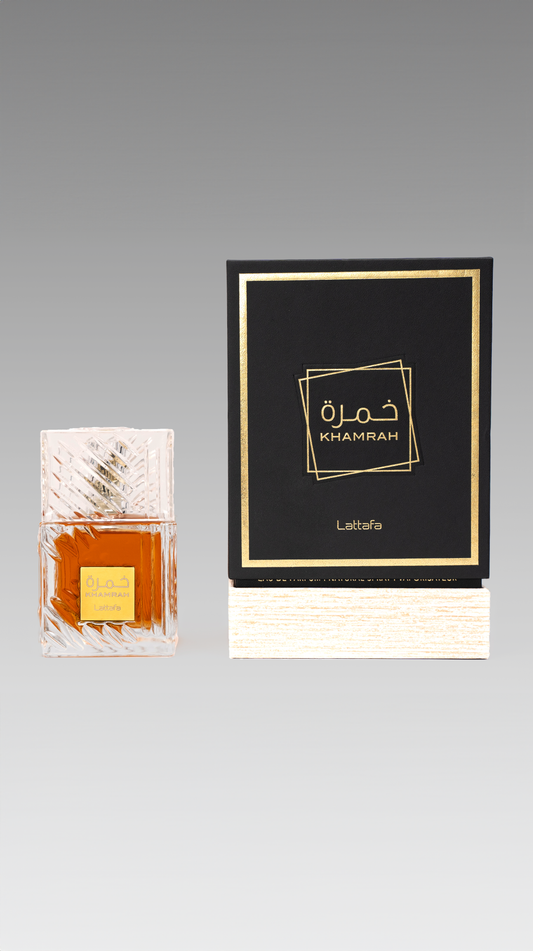
Decryption of the olfactory pyramid
Introduction: What is the olfactory pyramid?
Today, we dive into the heart of the art of perfumery to decipher a key element: the olfactory pyramid. Often considered as the basis of the composition of a perfume, the olfactory pyramid is a complex structure which reveals the secrets of its evolution on the skin.
Why is it crucial to understand the olfactory pyramid? By understanding how fragrances are constructed, you will be better equipped to choose fragrances that match your tastes and personality. Whether you are a novice or a passionate enthusiast, this dive into the olfactory pyramid will offer you an in-depth understanding of the subtle nuances that make each perfume a unique sensory experience.
In this article we will explore:
- The definition of the olfactory pyramid and its essential role in the creation of perfumes.
- The different categories of notes that make up the olfactory pyramid: head, heart and base.
- How to interpret and read an olfactory pyramid to better understand a perfume.
- The importance of the olfactory pyramid in the process of selecting a perfume that suits you.
Prepare yourself for a journey to the heart of aromas and sensations, where each note tells a story and each fragrance evokes an emotion. Ready to decipher the olfactory pyramid together? Let's go!
What is the olfactory pyramid?
Definition of the olfactory pyramid
The olfactory pyramid is a graphic representation that breaks down a perfume into three distinct levels: top notes, heart notes and base notes. This pyramid-shaped structure allows you to visualize how a perfume evolves over time on the skin. Each level of the pyramid plays a unique role and contributes to the overall olfactory experience.
Its role in the composition of a perfume
The role of the olfactory pyramid in the composition of a perfume is crucial. It guides perfumers in the development of their creations, allowing them to structure the different scents so that they are revealed in a harmonious and progressive manner. By using the olfactory pyramid, perfumers can ensure that perfume provides a dynamic and consistent olfactory experience, from initial application to the last traces that persist on the skin.
Introduction to the different notes: head, heart and base
- Head Notes
Definition : Top notes are the first scents perceived when perfume is applied. They are generally light and volatile.
Role : They create the first impression of the perfume and evaporate quickly, usually within 15 to 30 minutes.
Examples of Top Notes : Citrus (lemon, bergamot), aromatic herbs (mint, basil), and light spices (pink pepper).
- Heart Notes
Definition : Also called "heart notes", they emerge after the top notes dissipate and form the heart of the perfume.
Role : They bring depth and complexity to the perfume, lasting from a few hours to several hours.
Examples of Heart Notes : Flowers (rose, jasmine), fruits (peach, apple), and sweet spices (cinnamon, cardamom).
- Background Notes
Definition : Base notes are the scents that persist the longest, often several hours or even all day.
Role : They anchor the perfume and bring richness and longevity.
Examples of Base Notes : Wood (sandal, cedar), resins (amber, myrrh), and musky scents (musk, vanilla).
By understanding this structure, you will be better able to decode the scents you encounter, appreciate their evolution, and choose those that best resonate with your style and preferences.
How to read an olfactory pyramid?
Explanation of the different graphic representations of the olfactory pyramid
The olfactory pyramid is often represented in the form of a graphic diagram which illustrates the composition of a perfume. It is divided into three main sections: top notes, heart notes and base notes. Here is how to understand these representations:
Triangular Shape : The most common shape is the pyramid, where each level represents a group of notes.
- Top : The top notes, located at the top of the pyramid, are the most volatile and the first to be perceived.
- Center: The heart notes are found in the middle of the pyramid, representing the heart of the perfume which takes over after the top notes.
- Base: The base notes, at the base of the pyramid, are the most lasting and persistent.
Bar or Circle Charts : Some brands use bar or circle charts to illustrate the proportion and duration of different notes. Each section or bar indicates the dominance of the notes and how long they last on the skin.
Sequential Lists : Another method is to list notes in the order they appear. Although less visual, this format allows you to understand the progression of scents.
Tips for interpreting an olfactory pyramid and understanding the structure of a perfume
Understanding an olfactory pyramid is essential to fully appreciating a scent and choosing the one that suits you best. Here are some tips for interpreting this structure:
- Analyze Top Notes : Start with the top notes. They define the first impression of the perfume but should not be the only criterion of choice, because they evaporate quickly. Look for fresh, bright scents.
- Observe the Heart Notes : The heart notes constitute the heart of the perfume and last longer than the top notes. They bring depth and character to the perfume. Make sure you like these notes because they will be around for several hours.
- Evaluate the Base Notes : Base notes are crucial to the longevity and depth of the fragrance. They are the most persistent and can last all day. These notes are often woody, musky or gourmand and leave a lasting impression.
- Understanding Evolution : A good perfume evolves harmoniously. Transitions between top, middle and base notes should be smooth. A well-constructed perfume tells a coherent story from start to finish.
- Skin Test : Graphics are helpful, but nothing beats a skin test. Fragrances interact differently depending on skin pH, temperature and other personal factors. Apply the perfume and let it evolve to fully understand its structure.
- Consider Personal Preferences : Your personal preferences play a crucial role. Some people prefer light, fresh scents, while others like rich, opulent scents. Use the olfactory pyramid to find scents that suit your tastes. (see the article “ 10 tips for choosing the right perfume ”)
By mastering the reading and interpretation of the olfactory pyramid, you will be better equipped to navigate the world of perfumes and discover fragrances that delight and suit you.
Conclusion
The olfactory pyramid is a tool for understanding the structure and evolution of a perfume. By breaking down perfumes into top, heart and base notes, it allows us to grasp the subtleties and dynamics of the fragrances we love.
We explored the definition of the olfactory pyramid and its crucial role in the composition of perfumes. We have detailed the three types of notes – head, heart and base – by explaining their role, their characteristics and their evolution over time. We've also provided practical tips for reading and interpreting an olfactory pyramid, helping you better understand the structure of scents.
Understanding the olfactory pyramid can greatly enrich your olfactory experience. By knowing the different notes and how they evolve, you will be better equipped to choose scents that match your tastes and preferences. Use this knowledge to analyze the perfumes you try, and make informed decisions that reflect your personality and style.
Don't be afraid to explore and experiment with different fragrances. Each fragrance is a unique work of art, and by trying various compositions you will discover what you really like. Let yourself be surprised by unexpected notes, and find the perfume that becomes your olfactory signature. The olfactory adventure is endless, and each discovery is a new opportunity to get to know yourself better.









